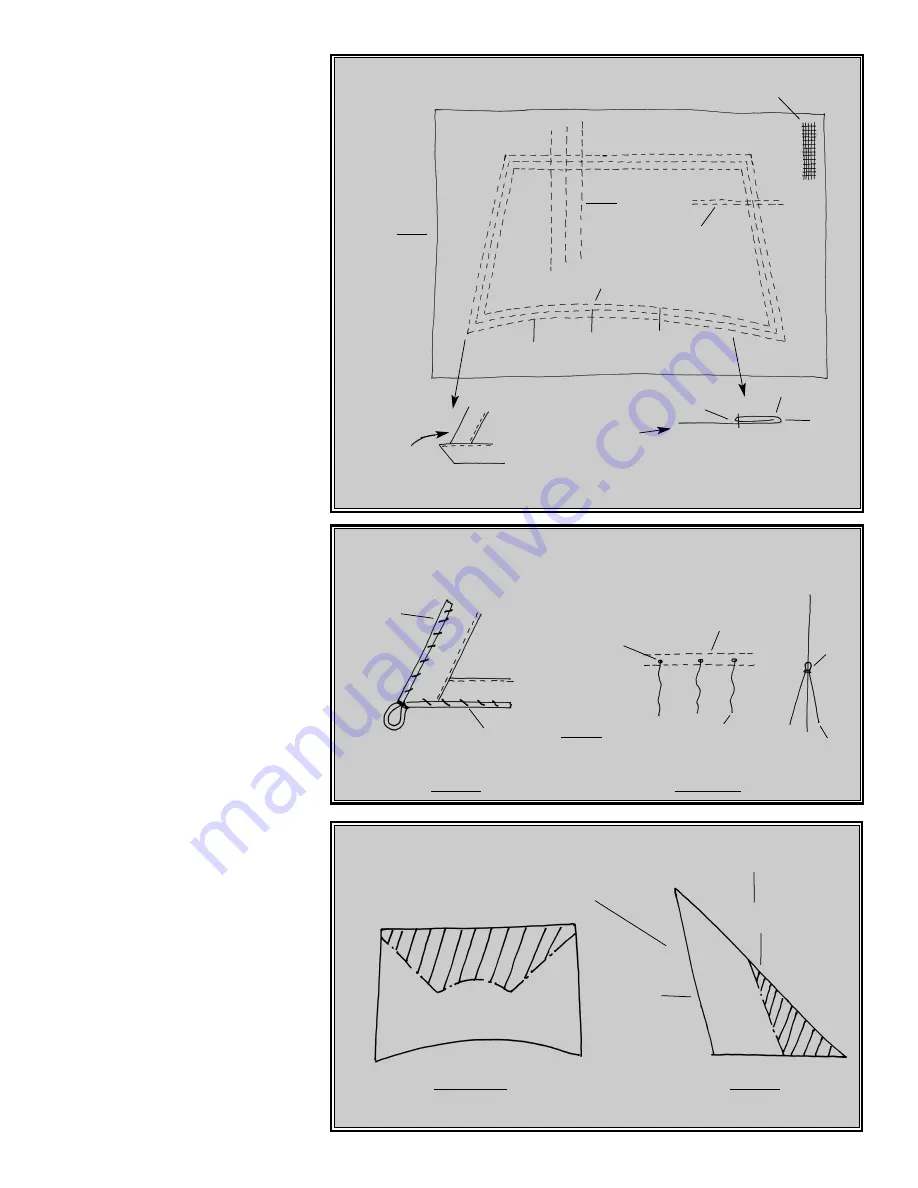
30
using Line A in Figure 7-4. Fold the
hem, iron it flat, and sew as close to Line B
as possible. Tuck the ends and hand stitch
the corners. The sail is ready for stretching.
Stretching Sails
: This assures the sail's
proper shape, since sewing may alter it.
Using the original pattern, trace the sail's
outline onto a piece of paper. Place the
paper on a solid, but porous, backing such
as a wood or cork board. Now wash the sail
again and lay it over the outline. Stretch the
wet material to the sail's outline, then secure
with stick pins through its outer edges.
When dry, the sail will have resumed its
proper shape. Iron it one more time.
Boltropes and Reef Points:
Although
boltropes can be omitted, they add quite
a bit to the model. Figure 7-5 also shows
how to install reef points.
Sewing Aids:
Visit a fabric shop and pur-
chase a bottle of
Fray-Chek
. Running or
brushing it along the edge of the cloth
prevents the material from unraveling
when cut and produces a sharp edge.
Apply it to the sail before rolling the hem.
Stitch-Witchery
and
Wonder-Under
are
basically the same product. They are
heat fusible bonding tapes. Stitch-
Witchery comes in a roll and is bond
sensitive on both sides. To join two
pieces, simply place a strip between
them and iron.
Wonder-Under comes in sheets with a
thin, paper backing on one side. This
material is useful for bonding letters and
numbers to a scale sailboat's sail. First, buy
the colored fabric for the numbers. Place
the Wonder-Under sheet on the cloth with
the paper backing up. Iron the sheet to
bond it to the material. Next, cut out the
letters, numbers, logo, or whatever with
scissors or a sharp blade. Peel off the
paper backing, position the letter on the
sail, and iron. This technique also works
for making flags from colored cloth.
Niagara
has no numbers, but Wonder-
Under could be used as a substitute for
sewing the hem.
Furled Sails
: Don't furl sails made from
sailcloth and cut to the original's scale
size. The material is usually too heavy,
resulting in a bulky furled sail. To solve
this problem, either proportionally reduce
the size of a sail by one-third when using
sailcloth (Figure 7-6), or buy a lighter
material such as Silkspan (model airplane
covering tissue available from Model
Expo). Depending on their size, even
Silkspan sails may require being reduced
by one-third. Test the percentage reduc-
tion to determine how much material is
Fig 7-6 Furled Sails
Fig 7-4 Sailmaking
Fig 7-5 Boltropes and Reef Points
Sail cloth
Weave in same
direction as seams
Sew to represent
reef band
Pencil lines, then
sew seams
Mark with pencil
"A"
(cut)
"A"
"B"
"B"
"C"
"C"
Sew
(fold)
Hem (tabling)
Tuck corner & sew
by hand
Boltrope
Reef band
Punch holes
Sew
Down
Touch ends
with glue
Form a cringle
Reef point
Sew by hand through
the boltrope, not
around it
Boltrope
Reef Points
Iron before sewing
Square Sail
Staysail
Use full size if material
like "silkspan" if used
If same material
as set sail
Cut to this size for
furling
Full sail
(final shape)











































